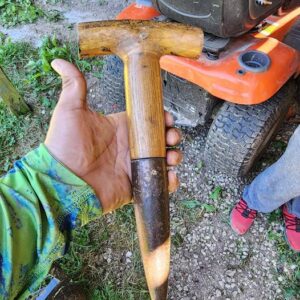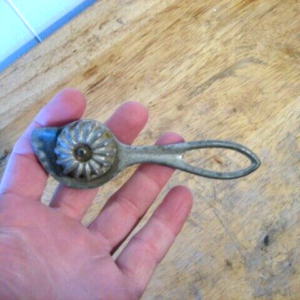A Glimpse into the Past
The vintage mechanical crumb sweeper, an ingenious household tool, evokes nostalgia for an era of polished dining tables and strict etiquette. Originating in the late 19th and early 20th centuries, this device quickly became a staple in homes, restaurants, and grand hotels, marking a significant step toward maintaining clean and elegant dining spaces.
The History
During the Victorian era, characterized by meticulous domestic order, the mechanical crumb sweeper emerged. As formal dining became central to social gatherings, the need for efficient cleaning tools grew. The crumb sweeper offered a practical solution for swiftly removing crumbs from tabletops without lifting and shaking tablecloths.
Typically made from wood and metal, these sweepers featured a cylindrical or rectangular brush enclosed in a decorative casing. Early designs showcased intricate craftsmanship, often adorned with engravings and inlays. Over the years, manufacturers refined the designs, incorporating materials like Bakelite and plastic, making them more affordable and accessible.
Usage in Everyday Life
The mechanical crumb sweeper was simple yet effective. Rolling the device over the table’s surface, the internal brush, rotated by wheels or gears, collected crumbs and small debris into an internal compartment. This design allowed for quick and discreet cleaning between courses or after meals, keeping dining tables pristine.
In households, the crumb sweeper became essential for homemakers, ensuring clean dining areas. In restaurants and hotels, waitstaff used these sweepers to maintain high standards of cleanliness and service, enhancing the dining experience for guests.
The Legacy
Though largely replaced by modern conveniences like vacuum cleaners and electric tabletop sweepers, the vintage mechanical crumb sweeper holds a special place in the history of domestic tools. Its legacy endures, symbolizing a time when manual ingenuity and elegant design created practical solutions for everyday challenges.
Today, collectors and enthusiasts cherish these antique sweepers. They serve as decorative pieces that evoke the charm of a bygone era, reminding us of the evolution of domestic technology and the timeless pursuit of cleanliness and order.
The vintage mechanical crumb sweeper, with its rich history and enduring appeal, stands as a testament to the innovation and elegance of a past era. It reflects the meticulous care and attention to detail that characterized our predecessors’ daily lives, offering a glimpse into the heritage of home maintenance and dining etiquette.



